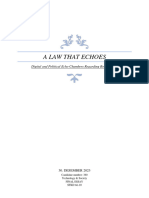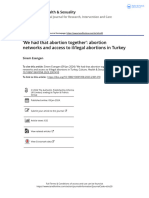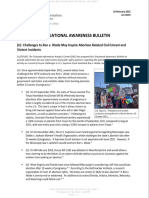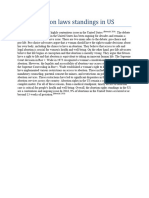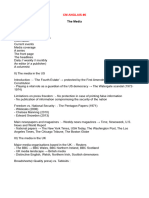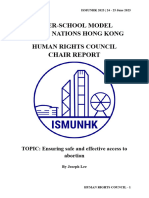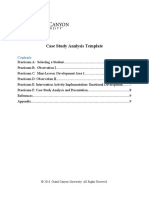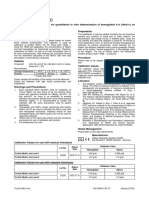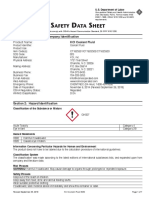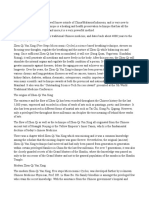0% found this document useful (0 votes)
9 views3 pages384 Speech Notes
The document discusses significant legal and social movements surrounding abortion rights, highlighting the Supreme Court case Planned Parenthood v. Casey (1992), which reaffirmed the right to abortion while allowing states to impose regulations that do not create an 'undue burden.' It also emphasizes the role of social media, particularly hashtags like #MyBodyMyChoice, in mobilizing support for reproductive rights, as seen in Argentina's legalization of abortion in 2020 and protests against Texas's restrictive abortion laws in 2021. Overall, the document illustrates the intersection of legal rulings and digital activism in shaping the discourse on reproductive rights.
Uploaded by
mutuallyrailaCopyright
© © All Rights Reserved
We take content rights seriously. If you suspect this is your content, claim it here.
Available Formats
Download as DOCX, PDF, TXT or read online on Scribd
0% found this document useful (0 votes)
9 views3 pages384 Speech Notes
The document discusses significant legal and social movements surrounding abortion rights, highlighting the Supreme Court case Planned Parenthood v. Casey (1992), which reaffirmed the right to abortion while allowing states to impose regulations that do not create an 'undue burden.' It also emphasizes the role of social media, particularly hashtags like #MyBodyMyChoice, in mobilizing support for reproductive rights, as seen in Argentina's legalization of abortion in 2020 and protests against Texas's restrictive abortion laws in 2021. Overall, the document illustrates the intersection of legal rulings and digital activism in shaping the discourse on reproductive rights.
Uploaded by
mutuallyrailaCopyright
© © All Rights Reserved
We take content rights seriously. If you suspect this is your content, claim it here.
Available Formats
Download as DOCX, PDF, TXT or read online on Scribd
/ 3

